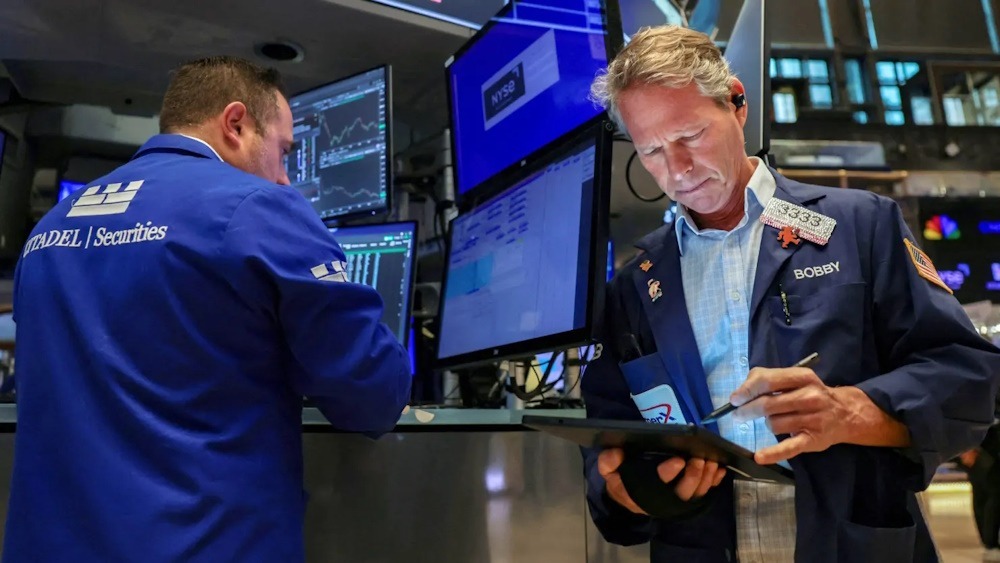
Nasdaq Futures exhibited a robust recovery on Monday following a significant decline the previous Friday. Yesterday’s rally was influenced by President Donald Trump’s conciliatory remarks regarding the recent intensification of trade tensions between the United States and China. All three major stock indexes concluded the trading session in positive territory. The rally exhibited a broad-based nature, with small-cap stocks experiencing a notable increase. The Dow Jones Industrial Average advanced 1.3%, equating to an increase of 587.98 points, ultimately closing at 46,067.58. It is noteworthy that 22 of the 30 components of the index concluded the trading session in positive territory, whereas eight ended in negative territory.
The tech-heavy Nasdaq Composite concluded at 22,694.61, reflecting an increase of 2.2% or 490.18 points, propelled by the robust performance of major technology firms. The S&P 500 experienced an increase of 1.6%, translating to a rise of 102.21 points, concluding the session at 6,654.72. Among the 11 broad sectors of the market index, nine concluded in positive territory, whereas two remained in negative territory. The Technology Select Sector SPDR experienced a decline of 2.4%, followed by the Energy Select Sector SPDR at 1.4%, the Consumer Discretionary Select Sector SPDR at 2.2%, the Industrials Select Sector SPDR at 1%, and the Materials Select Sector SPDR at 1.6%. The fear gauge, the CBOE Volatility Index, experienced a decline of 12.1%, settling at 19.03. On Monday, 18.2 billion shares changed hands, which is below the 20-session average of 20.2 billion shares. The S&P 500 achieved seven new 52-week highs alongside 14 new 52-week lows. The Nasdaq Composite recorded 91 new 52-week highs alongside 120 new 52-week lows.
On October 12, President Donald Trump posted “There is no need for concern regarding China; everything will turn out well!” President Xi, a figure of considerable esteem, has recently encountered a challenging situation. He is opposed to the prospect of Depression for his country, and I share that sentiment. The United States aims to assist China rather than inflict harm upon it. Vice President JD Vance stated that the Trump administration stands prepared to engage in negotiations with China, contingent upon Beijing’s willingness to adopt a reasonable stance. However, he also suggested that China’s reluctance could compel the U.S. government to implement more stringent measures. In an interview, U.S. Treasury Secretary Scott Bessent indicated that the forthcoming meeting between President Trump and Chinese President Xi Jinping in South Korea remains on schedule, as both parties are keen to mitigate trade tensions. On October 9, China’s Ministry of Commerce announced a new regulation mandating that all foreign enterprises secure a license to export products containing over 0.1% of rare earth minerals. This requirement applies regardless of whether the minerals are sourced from China or if the products are produced using Chinese extraction, refining, magnet-making, or recycling technologies.
The new regulation is set to take effect on December 1. China accounts for approximately 70% of the global supply of rare earth minerals, which are essential for the functioning of contemporary high-tech industries. The United States stands as a significant importer of rare earth minerals, which are deemed highly valuable and essential inputs for the semiconductor, defense, and automobile sectors. On Oct. 10, the U.S. government responded by imposing an additional 100% tariffs on Chinese exports to the nation, supplementing the existing tariffs already levied on these products. Currently, the average tariff on Chinese goods in the United States stands at 40%. The new tariff of an additional 100% will take effect on November 1. S&P Futures decline as selling pressure reemerges following a brief one-day recovery.
